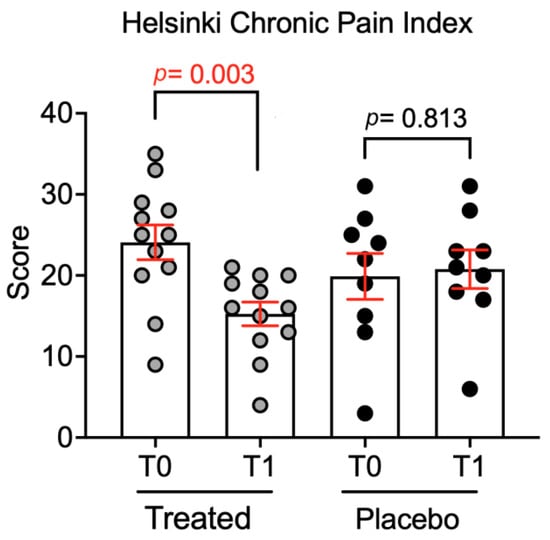“Pain is a more terrible lord of mankind than even death”—Albert Schweitzer, 1922. The importance of pain in dogs, as well as in humans, can be easily understood considering that the first uses of anesthetic protocols in animals were designed to relieve pain and not to anesthetize the animal. Thus, it can be assumed that pain therapy allowed the birth of anesthesiology [1]. Furthermore, it is important to note that, unlike other drugs that require careful diagnosis, before administration, some authors argue that pain treatment should proceed regardless of the severity of clinical signs [2]. In contrast, there is a growing awareness among pet owners about the risks associated with the excessive use of synthetic drugs, which has fueled interest in natural products, with few or no contraindications that can be used routinely and/or continuously over time. Over the last twenty years, pain research has focused on molecules or compounds that can alleviate both chronic and acute pain in dogs. Additionally, various efforts have been made to assess the biochemical markers related to pain. Among these, analyzing oxidative status, including antioxidant potential, has emerged as one of the most promising methods for evaluating inflammatory states and associated pain, as recommended by the AAHA guidelines [3]. Based on these premises, research has focused on assessing pain and the effectiveness of natural products, showing that food supplements made from natural compounds can effectively reduce oxidative metabolite levels [4]. This not only alleviates pain perception but also minimizes the damage caused by the inflammation itself. Among natural products, cannabis is undoubtedly one of the most popular and widely discussed plants in recent years. Cannabis has undergone a unique process of genetic selection to maximize the concentration of pharmacologically active molecules in its phytocomplex. Currently, the cannabis plant (in its various genotypic and phenotypic variations) and its derivatives are considered as valuable or promising resources for a wide range of conditions, including Alzheimer’s disease, psoriasis [5,6], hair loss [7], cancer, and stress [8,9], and to alleviate peripheral neuropathy symptoms associated with chemotherapy, an adverse sequela of cancer therapy characterized by loss of peripheral nerve function which typically manifests with a distal-to-proximal pattern of progressive peripheral sensory nerve loss. [10,11]. The cannabis-based nutritional supplement tested in this study contains both cannabidiol (CBD) and cannabigerol (CBG), two of the most prevalent compounds in cannabis aside from tetraydrocannabinol (THC). CBD is the primary non-psychoactive cannabinoid with demonstrated pharmacological efficacy [12]. It was the first cannabinoid to be discovered [13] and, alongside THC, has been the focus of much research. While its exact effect on pain and inflammation is not yet fully understood, it appears to involve interaction between CBD and the CB1 and CB2 receptors. CBG is a relatively recently discovered cannabinoid (identified by Yechiel Gaoni in 1964), and in its acid form (CBGA) is the precursor to both CBD and THC. It seems to be particularly involved in pain perception, interacting with both the CB1 and CB2 receptors as well as with cation channels encoded by the TRMP8 gene which transmit the sensation of cold. The supplement also contains Myrcene, a monoterpene (an aromatic molecule in cannabis) that antagonizes TRPV ion channels activated by capsaicin and high temperatures, which are involved in acute pain perception [14]. Additionally, it includes devil’s claw (Harpagophytum procumbens root extract), a perennial plant that thrives in arid conditions in Southern Africa. Historically used to address osteo-articular and, in some cases, muscular issues, devil’s claw root, demonstrates anti-inflammatory and pain-relieving properties by increasing the production of catalase and superoxide dismutase [15]. The manufacturer suggests, and the hypothesis is, that the combination of these compounds may reduce chronic pain in dogs, thereby enhancing their quality of life, thanks to the synergic effect of the different molecules combined. To this end, a comprehensive hematological and biochemical screening, along with an assessment of oxidative and inflammatory states was conducted in dogs affected by chronic pain due to severe osteoarthritis and treated with Pain Relief™. It is important to emphasize that the purpose of this research was not to evaluate the efficacy of individual phytocomplexes or molecules within the supplement being studied, but rather to assess the overall effect of Pain Relief™ as a whole.
Source link
Ruggero Amato www.mdpi.com



